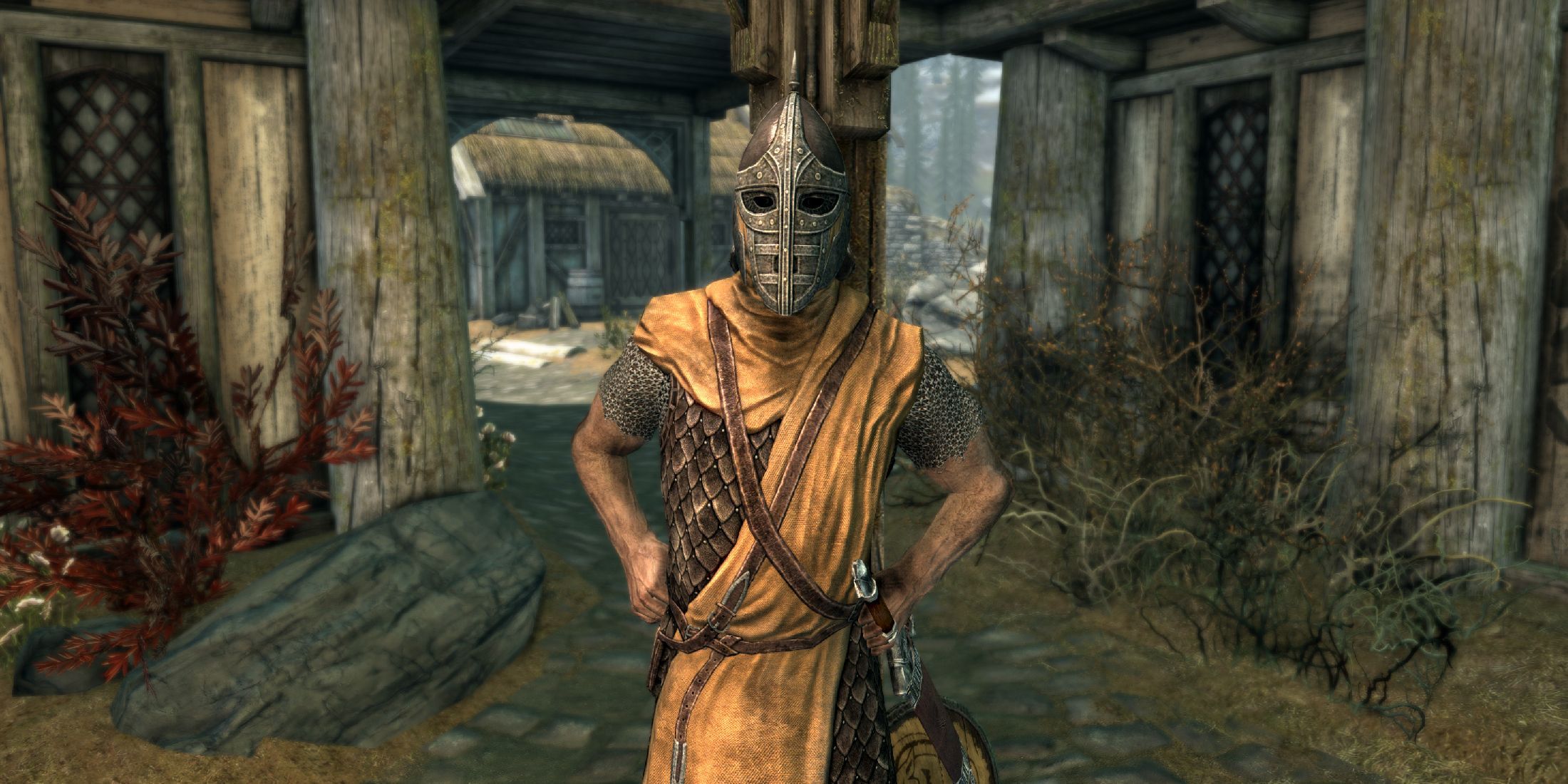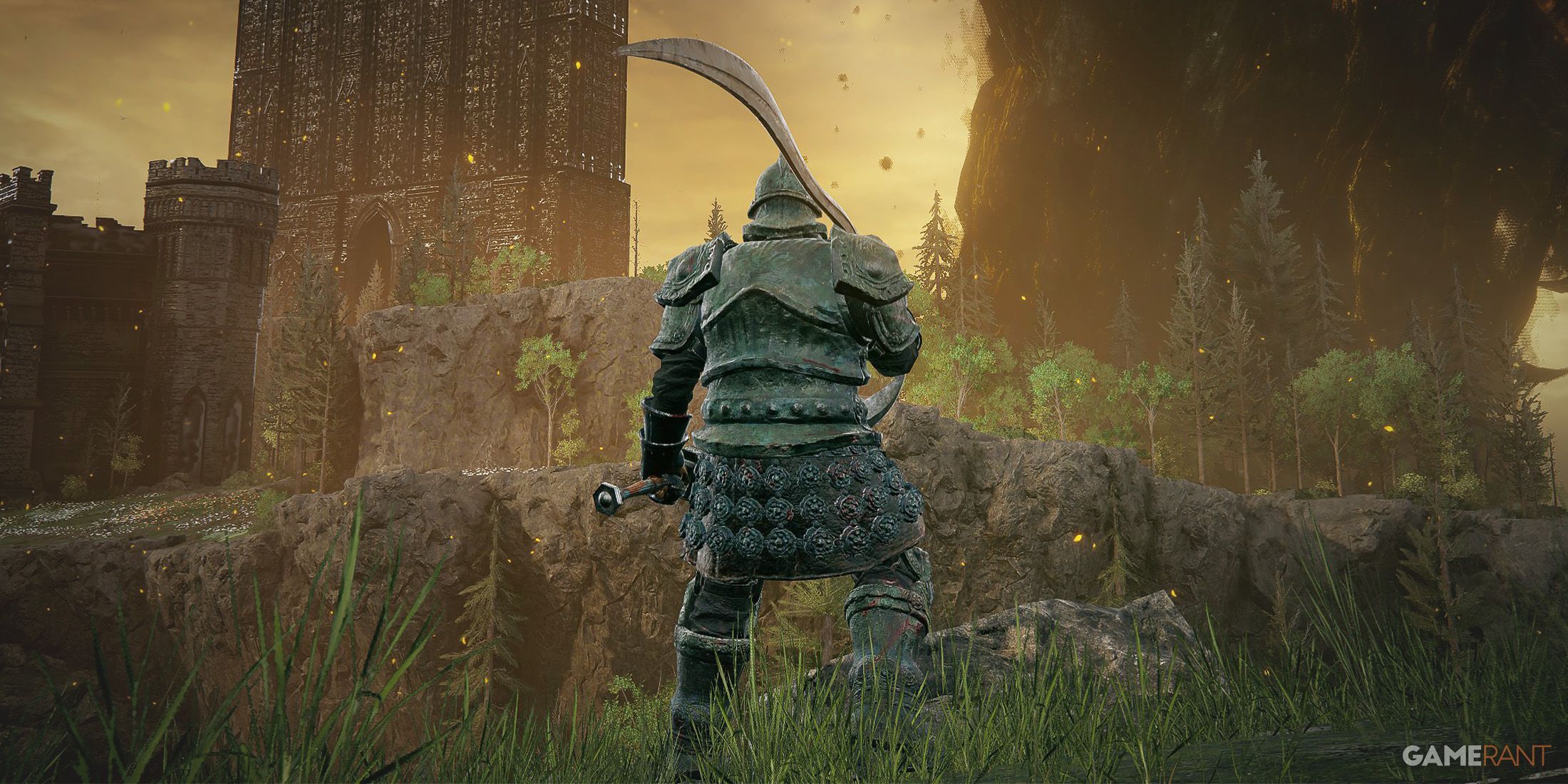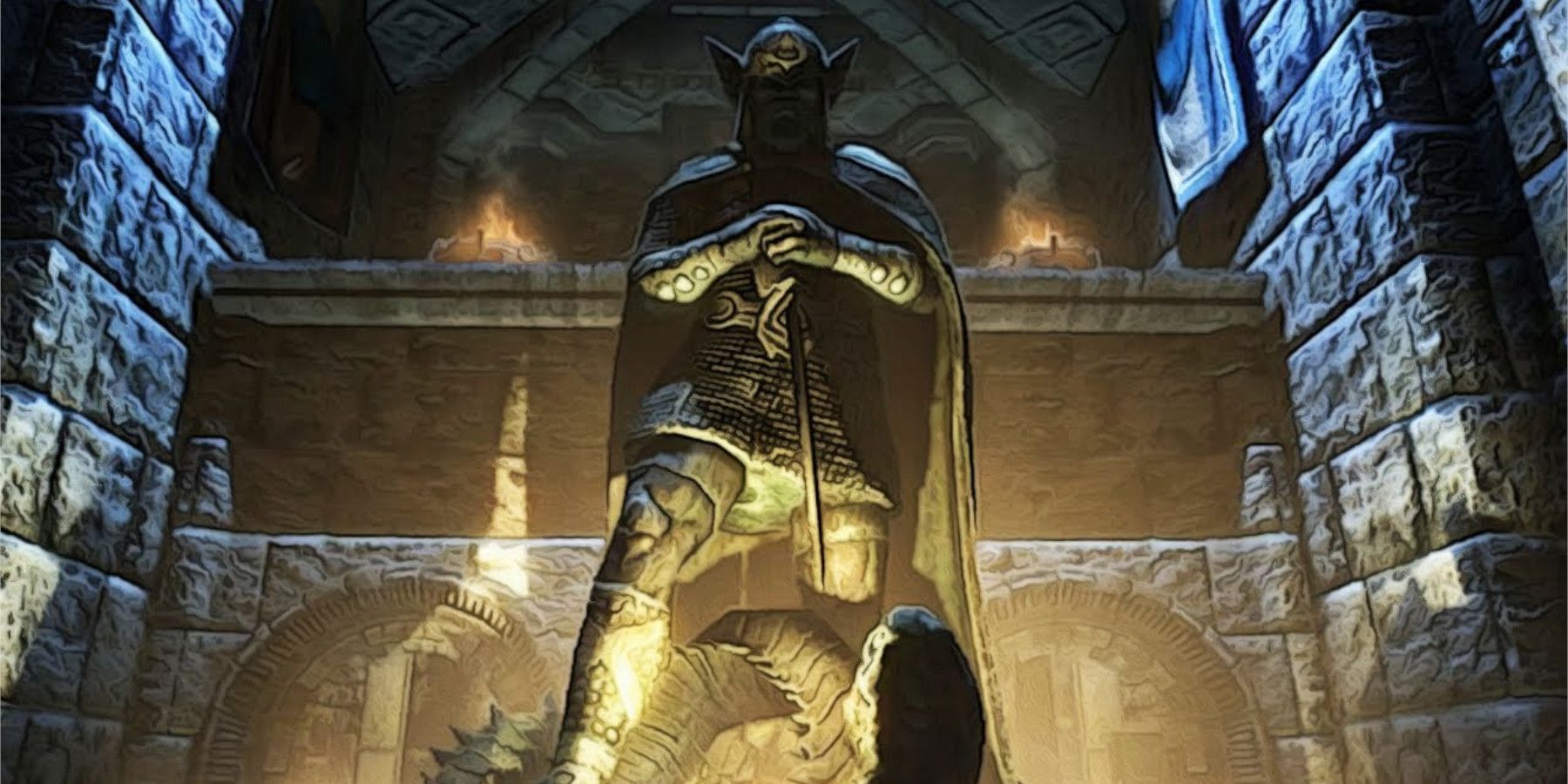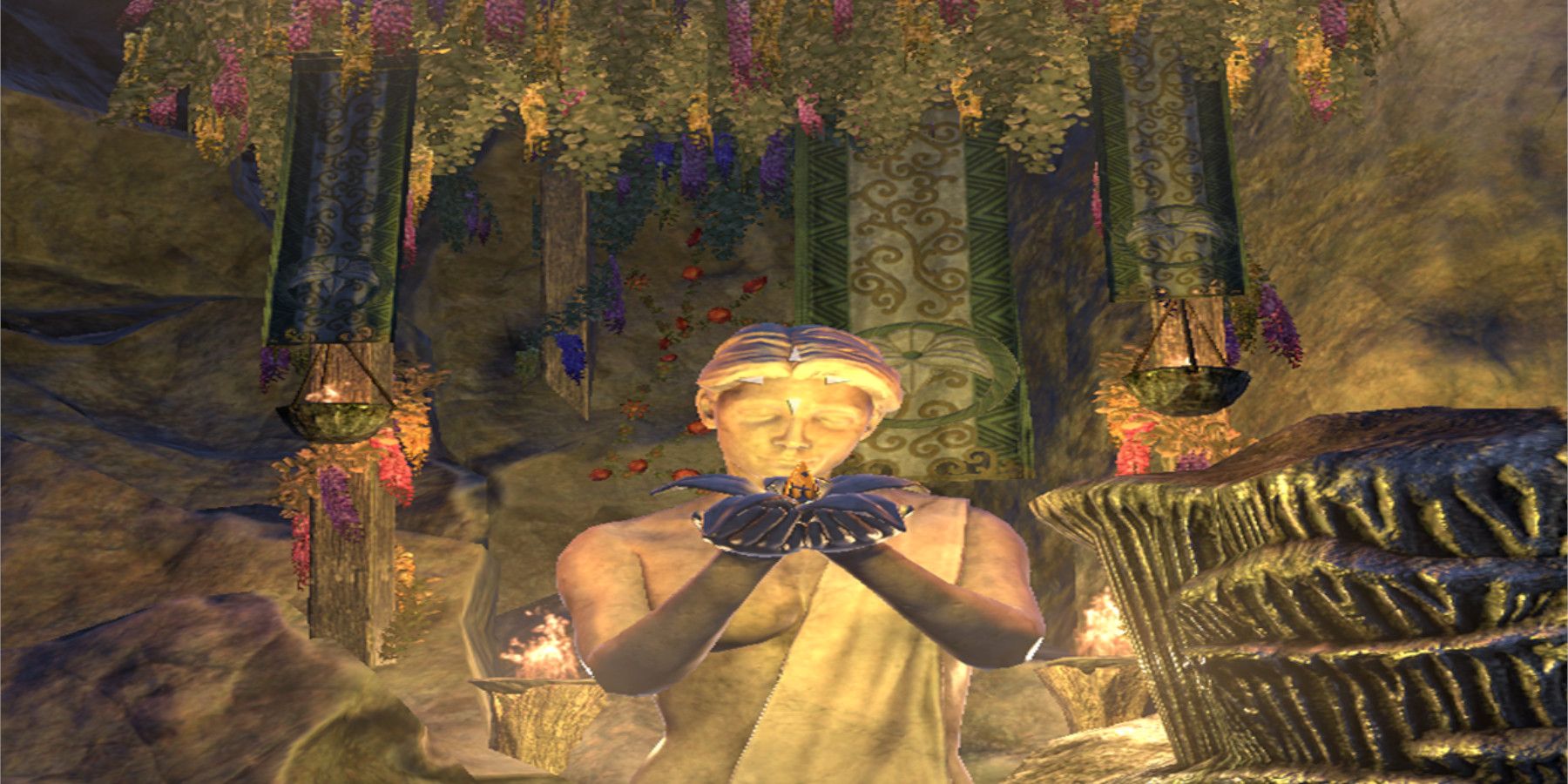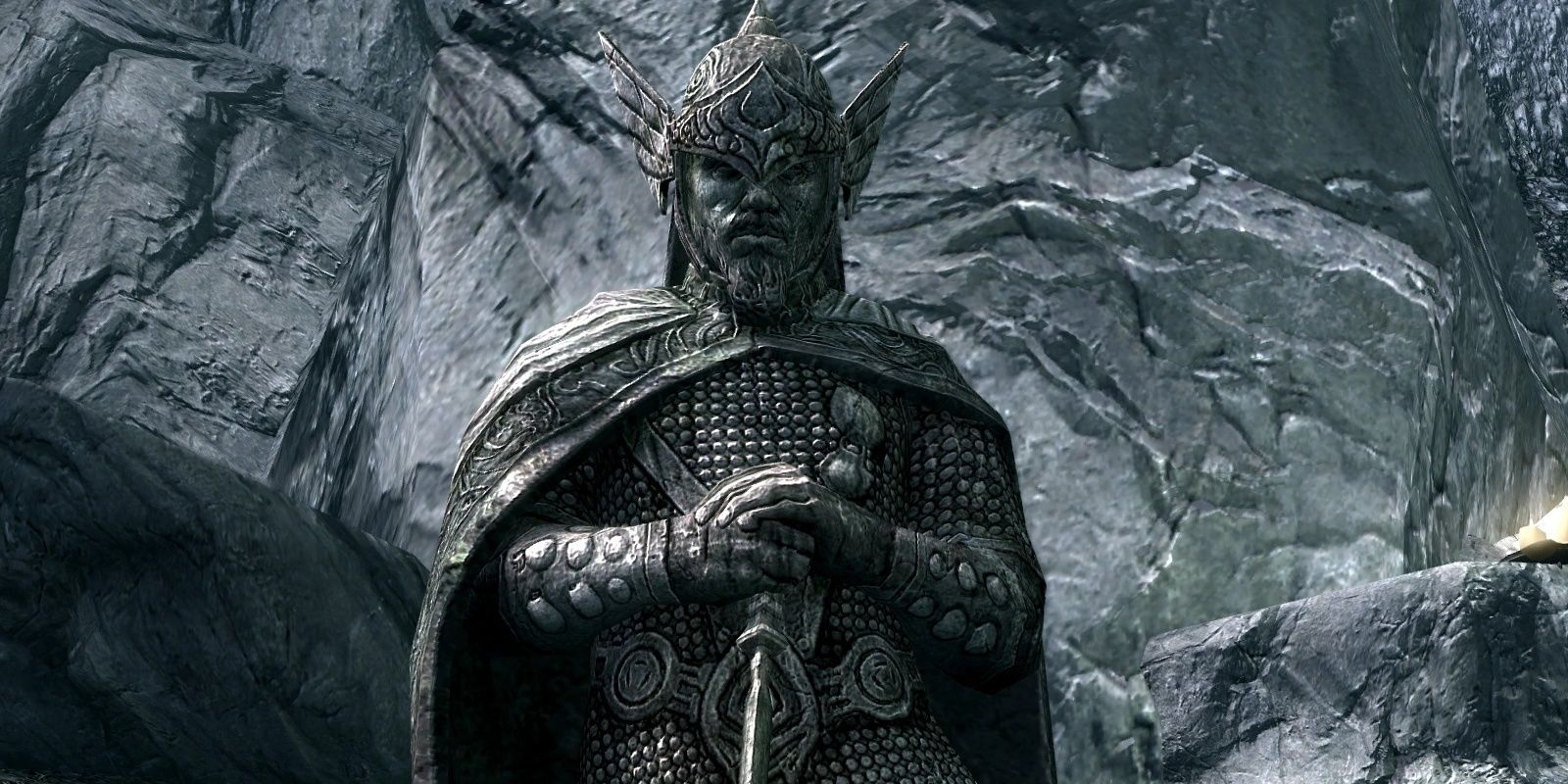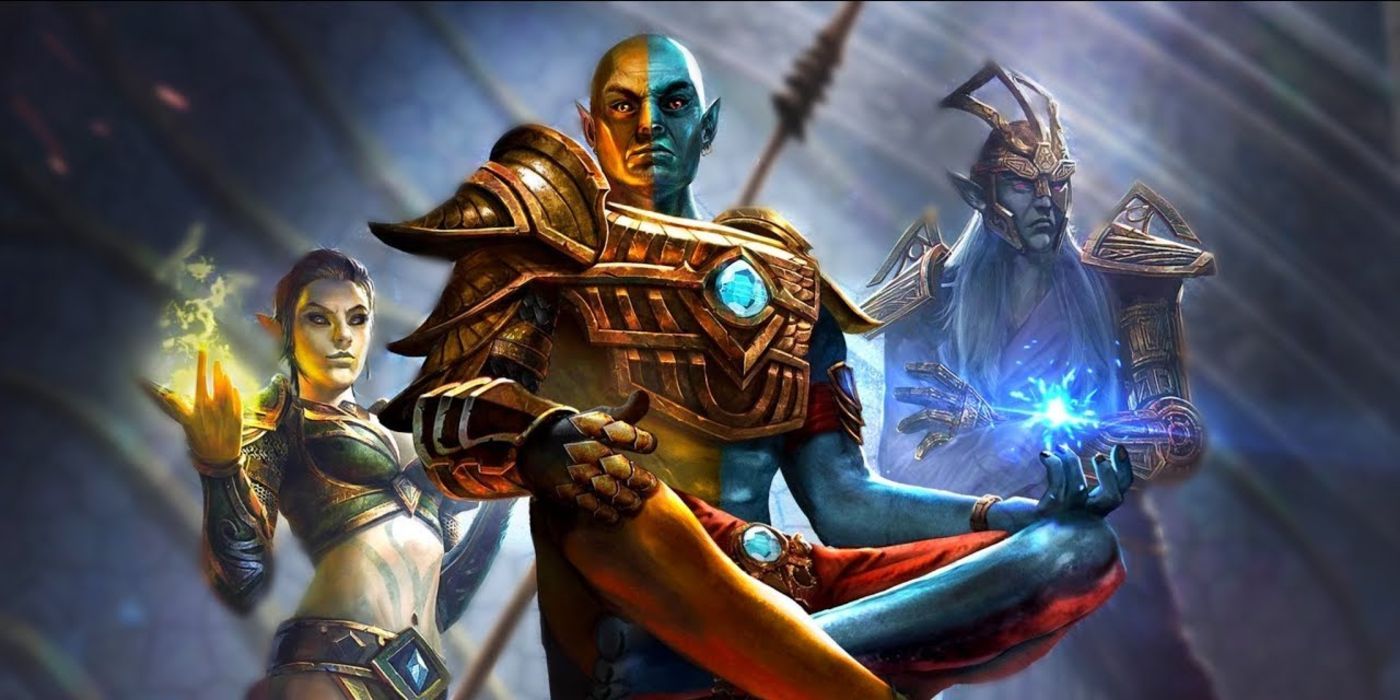One of the more unique and strange parts of lore in The Elder Scrolls is its gods and the state of godhood. The gods are communally referred to as Et'Ada, and were created alongside the rest of the universe by two dichotomous forces known as Anu and Padomay, the light and the dark. The Et'Ada eventually split into two species, known throughout The Elder Scrolls titles as the Aedra and the Daedra. The Aedra and the Daedra are effectively the gods that the different races and cultures of The Elder Scrolls worship in various ways, although there are other entities that also possess god-like abilities.
One of these entities is the Moon, which is worshipped by The Elder Scrolls' cat-like race the Khajiit and is responsible for determining what type of Khajiit is born based on the moon's phases at the time of birth. Another is the Hiss, a hivemind race of trees that are said to have given birth to the lizard-like Argonians and whose sap is fed to Argonian newborns to give them their souls. However, other beings like the first Emperor Tiber Septim have managed to reach godhood as well through a process known as mantling.
Godhood in The Elder Scrolls
Gods in The Elder Scrolls are not like gods in most Fantasy universes or mythologies that are divine beings with powers and morality that humans and mortals couldn't possibly reach. Instead, the Et'Ada are simply spirits that came before and exist in a different dimension than Tamriel. This does not stop them from being revered as gods and demons by mankind, however, who have developed a number of different myths to try and explain the Et'Ada and their origins in The Elder Scrolls. This extends even to the two forces that created the entire universe, Anu and Padomay who are widely regarded not as deities, but rather as primal forces of the universe without consciousness or will.
This interesting form of godhood means that the gods of The Elder Scrolls are not as permanent, morally perfect, or everlasting as some people may expect. In the case of The Elder Scrolls Aedra, they can even die. The Daedra, on the other hand, are tied to their realm of Oblivion so that they are reborn when they die, but even they have severe limitations to their powers for a variety of different reasons. The less divine nature of the Et'Ada also means that some mortals have tried to ascend to godhood, with a couple even succeeding.
What Mantling is in The Elder Scrolls
The process of ascending to godhood in The Elder Scrolls is referred to as apotheosis, which can be achieved in a small number of ways including mantling and CHIM. Apotheosis has been attempted by some very powerful mortals in The Elder Scrolls with only a few achieving full apotheosis. These include the first emperor Tiber Septim who mantled to become the god known as Talos and Reman Cyrodiil who became the god known as Reman as well as Mannimarco who managed to do so using the Dragon Break in Daggerfall. However, the example of apotheosis that players get to see first hand is in Oblivion's Shivering Isles DLC, where the Hero of Kvatch mantles with the Daedric Prince of madness, Sheogorath.
Mantling is easiest described as a simple replacement. It sees an Et'Ada passing their power, role, and even identity to a mortal and allowing themselves to simply die off in the process. The process of mantling is not entirely understood by fans of The Elder Scrolls or characters in the games themselves, but the example set by the Shivering Isles DLC provides most of what is known about the process. The DLC sees the player visiting the realm of madness, the Shivering Isles that are dominated by dangerous creatures and strange residents. The player then begins helping Sheogorath protect the realm from destruction at the hands of Jyggalag, who ends up being part of a curse that sees Sheogorath destroying and rebuilding his realm every so many years. To prevent this from happening Sheogorath allows the player to mantle using the staff associated with his power. This turns the Hero of Kvatch from a mortal into a new Sheogorath that has complete control of the realm and all of Sheogorath's power from then on.
CHIM in The Elder Scrolls
CHIM is another way for mortals to achieve apotheosis, while it can also allow Et'Ada to ascend even further in power and influence. CHIM is a state that allows an individual to break free of the influence of Anu and Padomay, freeing them of any influence from physical laws or influences from the dimensions of Oblivion. Breaking free of this influence takes that individual to a state much closer to what many people consider godhood, with them being able to influence and control the universe however they see fit. The most well-known cases of CHIM are found in both Talos and the god-king of Morrowind Vivec, who is said to have achieved it after mating with the Daedric Prince Molag Bal.
However, the first recorded attempt at achieving CHIM actually occurred at the creation of Nirn, the mortal realm. Nirn's creation was the doing of an Et'Ada known as Lorkhan who tricked his peers into creating the realm, which ultimately split the Et'Ada into the Aedra and Daedra as well as splitting Lorkhan in the process. However, many believe that Lorkhan intended to fail his ascension to CHIM so that his failure could be used as an example to show others how to avoid a similar failure. Many also believe that an attempt at CHIM is what caused the disappearance of The Elder Scrolls' mysterious Dwemer race, whether it be from them failing or being successful and ascending from the mortal realm. Hopefully, players will have more answers on the Dwemer, CHIM, and godhood with the release of The Elder Scrolls 6.
The Elder Scrolls 6 is in development for PC and Xbox.

